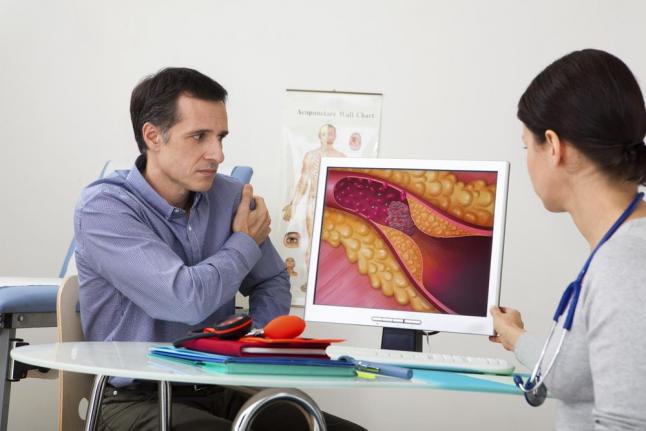
Patients Alter Lifestyle After Seeing Own Calcified Arteries

DUBROVNIK, Croatia, June 15 (UPI) — A small study in Denmark found that showing people with coronary artery disease pictures of their arteries during diagnostic consultations influenced them to change their diet and lifestyle habits.
The study found the number of people who continued to smoke after a diagnosis was cut in half and the number who chose not to improve their diet was cut by a third.
[one_fourth]
[/one_fourth][three_fourth_last]”When patients receive a new diagnosis of non-obstructive coronary artery disease it might be a good time to motivate them to take their lipid-lowering therapy and adopt a healthy lifestyle,” said Rikke Elmose Mols, a nurse and PhD student in the Department of Cardiology at Aarhus University Hospital-Skejby in Denmark, in a press release. “But until now there has not been a study on the impact of showing consecutive patients with atypical angina images of their calcified coronary arteries as a way to stimulate change.”
The study included 355 patients with hyperlipidaemia who had undergone a CT scan of their coronary arteries and been diagnosed with non-obstructive coronary artery disease. Of those, 189 were shown pictures of their calcified coronary arteries during consultations with nurses and doctors.
Researchers found that 22 percent of people who had not seen their arteries kept smoking, versus 9 percent of those who’d seen the images, and 64 percent of people who had not seen scans of their arteries continued eating an unhealthy diet, as opposed to 44 percent of people who’d seen them.
“We found that patients who looked at images of their calcified coronary arteries were more likely to stop smoking, lose weight, eat a healthy diet, take recommended statins and reduce their plasma cholesterol levels,” Mols said.
“The results of our study suggest that visualising their health threat motivates patients to make changes to reduce their risk. A large-scale study is needed to confirm the findings and to determine the cost-effectiveness of implementing this intervention in clinical practice.”
The study is published in the Journal of American Medicine.





